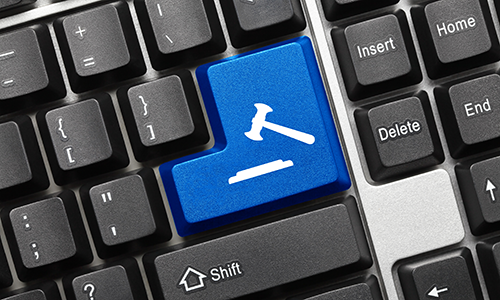Narrowing the Justice Gap Through Technology
 For litigants without the help of an attorney, the American civil justice system can be difficult to understand—let alone navigate. IAALS explored this issue in depth with our qualitative empirical research study Cases Without Counsel: Experiences of Self-Representation in U.S. Family Court. That effort explored self-representation in family court from the litigants’ perspective and highlighted a very real justice gap within the United States.
For litigants without the help of an attorney, the American civil justice system can be difficult to understand—let alone navigate. IAALS explored this issue in depth with our qualitative empirical research study Cases Without Counsel: Experiences of Self-Representation in U.S. Family Court. That effort explored self-representation in family court from the litigants’ perspective and highlighted a very real justice gap within the United States.
In a recent piece for the ABA Journal, Frederic I. Lederer, Chancellor Professor of Law and Director of the Center for Legal and Court Technology, formerly the Courtroom 21 Project, at William & Mary Law School, proposed several technological advancements that can help improve access to legal resources and litigant understanding of the process.
Lederer recommends providing materials like statutes, cases, and explanations of legal documents online that are easy for non-lawyers to understand. While there are still some people with limited technological access, most people today have some way of getting on the internet. Other possibilities include increasing the availability of smart forms and audio/video materials that explain court procedures and legal rules. IAALS’ Court Compass project is building on our Cases Without Counsel research and exploring how technology tools can be paired with a simplified divorce and separation process to improve the system for families.
Lederer also proposes a number of recommendations aimed specifically at courts, like allowing smartphones in court rooms and advancing interpretation services (both foreign languages and sign language). Videoconferencing could be used in new ways to allow certain cases to be heard more efficiently, increase the likelihood of testimony, and decrease costs and delays.
In 2016 the Conference of Chief Justices endorsed a set of Recommendations that call for improving the delivery of civil justice in our state courts, and IAALS played a key role in developing the Recommendations. Recommendation 13 focuses on providing superior access for litigants. Specifically, the Recommendation provides that: “Courts must take all necessary steps to increase convenience to litigants by simplifying the court-litigant interface and creating on-demand court assistance services.” The Recommendations call out internet portals, kiosks, and remote audio and video services as examples of the role technology can play in simplifying the court-litigant interface.
While changes like these will not solve every problem facing our civil justice system, such incremental steps get us toward the end goal. Lederer says:
“Technology is not a panacea, and we need to remember that often technological efforts to enhance access to justice ought to be complemented by more fundamental improvements in our legal system. But especially as artificial intelligence linked to proper data and creative algorithms improves, we may well be able to substantially enhance access to justice for those who today have little or no access at all.”
Heather Buchanan is a third-year law student at the University of Colorado Law School and contributes to IAALS Online. Please direct inquiries about this post to iaals@du.edu.


